Creating Opportunities in a Safe Environment: Fostering Self-Sustained and Resilient Communities (COSE II)

Summary
The “Creating Opportunities in a Safe Environment: Fostering Self-Sustained and Resilient Communities (COSE II)” solution was implemented at the Gorno-Badakhshan Autonomous Oblast (GBAO) in Tajikistan with the objective to increase the disaster resilience of local communities through reduced vulnerability and increased livelihood opportunities.
Home to the Pamir mountains, the GBAO province is an area where harsh climatic conditions and hydro-meteorological disasters are frequent. Local communities in the region are mainly dedicated to agricultural activities like livestock breeding and crop cultivation and are highly dependent on the ecosystems services that the surrounding mountains offer, including cultivation areas, meltwater, forage, and wood. However, the high demand for resources together with a lack of environmental consciousness, legal awareness, and support to develop sustainable land management plans has led to the degradation of forests and increased soil erosion, further amplifying the vulnerability of communities.
This project forms part of the joint efforts for solving those issues and increasing the climate resilience at the Khorog town and the Shughnan and Roshtqala districts of GBAO. It was implemented from August 2016 to December 2019 by the Aga Khan Agency for Habitat (AKAH) in close partnership with the Mountain Societies Development Support Program (MSDSP) and employing the successful results of the COSE I project that was carried out from 2009 to 2016 also in the same province.
By working in conjunction with communities and local government, the project looked to put into practice the following outputs:
- 1.1 New and updated knowledge and information about remote and local hazards and risks is available for development planning, natural resources management and policy making.
- 1.2 Communities for Disaster Risk Resilience are strengthened.
- 1.3 Capacity development and resources delivered to project stakeholders.
- 2.1 Nature Resource Management and Income Generating Activities, sub-projects from Pasture and Livestock Management Plan, Land Use Plans, and Income Generating Activities competition are prioritized and implemented.
- 2.2 Mitigation projects and early alerting solutions are identified based on hazard risk examination and are implemented.
Overview
- Location:
- Implementation sites:
-
- Single country
- Single location
- Mountain region:
-
Pamir Mountains
- Province:
-
- Gorno-Badakhshan Autonomous Oblast (GBAO) region
- Solution scale:
- Ecosystem type(s):
- Solution type(s):
- Sector(s):
- Climate impact(s) addressed:
- Other climate impact(s) addressed:
-
- GLOF (glacial lake outburst floods)
- Climate impact time-scale(s):
- Main benefit associated with the solution:
- Co-benefit(s) associated with the solution implementation:
-
- Economic benefits (e.g. job creation, tourism)
- Environmental benefits (e.g. biodiversity preservation, water security, food security)
- Political benefits (e.g. reduced displacement/migration)
- Social benefits (e.g. poverty reduction, inclusiveness and equity, health and well-being)
- Technical benefits (e.g. innovative use of geographic information systems)
- Implementation timeline:
-
- 2016 - 2019
Solution details
Main beneficiaries & outcomes
The various activities carried out under the COSE II project have resulted in approximately 15,900 direct and 37,000 indirect beneficiaries.
Following a cluster approach, the project worked in 30 villages within the implementation area for achieving the following two main outcomes:
- Communities and government authorities apply comprehensive land use planning and have adopted sustainable pasture, livestock and natural resource management for effective risk reduction.
- Local communities have access and make use of livelihood opportunities and risk reduction solutions for increased resilience to natural disasters.
Likewise, the project also promoted a gender approach in the establishment of the Land Use Committee and the Pasture User Group, as well as in the development of the Land Use Plans and the Pasture and Livestock Management Plan where women played a key role.
Planning and implementation
The Aga Khan Agency for Habitat (AKAH) (formerly FOCUS) was the main organization in charge of implementing the project, working in close partnership with the Mountain Societies Development Support Program (MSDSP), the lead agency for implementing rural development projects of the Aga Khan Foundation in Tajikistan.
The implementation responsibility for the five different outputs was divided between the two implementing agencies. Outputs 1.1 and 2.1 were under the responsibility of AKAH, outputs 1.2 and 2.1under MSDSP, while output 1.3 was carried out in conjunction. Moreover, in 2017, the Land Use Committee (LUC) and the Pasture User Group (PUG) were established for the planning and management of land resources and pasture. Finally, various sub-projects for Agriculture and Natural Resource Management at the community level and for Income Generating Activities at individual (or small group) levels supported the strengthening of the Nature Resource Management component.
Finance
This project was partially funded by the Swiss Development and Cooperation (SDC) which contributed with CHF 1,801,540 or 50.4% of the total project costs of CHF 3,575,841. The remaining amount was covered by core funds from AKAH, MSDSP and numerous other donors, as well as by in-kind contributions from the benefiting communities.
Innovation
This solution can be considered innovative within the mountainous implementation area given the integration of disaster risk reduction activities along with natural resource management actions. Moreover, given the increasing evidence of climate change in the region, including prolonged periods of drought and changes in precipitation patterns, the project undertook climate change adaptation and mitigation efforts in consideration of the expected increase in extreme events.
Performance evaluation
At the request of the Swiss Agency for Development and Cooperation (SDC), the independent and external agency Adansonia-Consulting conducted an evaluation of the project outcomes in 2019 with the intention of providing evidence of the results achieved, as well as to consolidate lessons and best practices for stakeholders. The evaluation exercise included a field mission to Tajikistan in November 2019, visiting sites in five of the six project clusters.
The evaluation criteria included relevance, effectiveness, efficiency, impact, and sustainability. In addition, climate change adaptation and reporting, monitoring and evaluation criteria were also assessed. Despite the fact that the evaluation took place one month before the project closing date, the results were found to be on track with almost all outputs achieved.
Long term project sustainability and maintenance
To ensure effective implementation of the project activities and to report on challenges and lessons learned, semi-annual narrative reports and comprehensive annual reports were prepared throughout the duration of the project. Numerous project fact sheets and technical notes on structural mitigation measures were also created. These exercises were facilitated by the completion of the generation of a socioeconomic baseline at the household and government official levels during the second half of 2017, where the level of awareness regarding disaster risk reduction was assessed.
Finally, semi-annual meetings were held during the COSE II steering committee in Khorog. Attendees included representatives from the Swiss Agency for Development and Cooperation (SDC), Aga Khan Agency for Habitat (AKAH), Mountain Societies Development Support Program (MSDSP), Aga Khan Foundation (AKF), GBAO provincial government, Khorog municipality, other key disaster risk reduction stakeholders as well as civil society and community leaders from the project area.
Capacities for design and implementation
Knowledge
The knowledge capacities of the project implementers and stakeholders were a key aspect for the successful implementation of this project. Various project activities were based on the generation and strengthening of this capacity within the project region as a fundamental measure to reduce the vulnerability of the local population and improve their climate resilience. From the beginning of the project implementation, the generation and updating of valuable information and knowledge on disaster risk reduction, policy planning, development planning, and natural resource management emerged as one of the main objectives.
Some of the capacity building activities included the training of government officials in remote sensing, GIS, flood modelling, emergency response and management, risk-informed development planning and bioengineering. Furthermore, farmers were trained in natural resource management concepts and techniques, while schoolchildren received courses on climate change and disaster risk reduction issues. Similarly, students at an international summer university also participated in activities designed to improve their knowledge on disaster risk reduction.
Technology
Available technologies were beneficial for the implementation of some of the project outputs, including the development of remote hazard and risk models (glacial lake outburst floods) and local hazard risk maps that were intended to create and update meaningful information for subsequent use in development planning, natural resource management and policy development. In addition, the technological expertise of project members was also used for the development of 2 spatial data infrastructures and 8 emergency communication systems in the project area, as well as for the corresponding training of staff members responsible for their use.
Five government specialists and project staff members were equally trained on the use of Geographic Information Systems and climate change impact modelling in Nairobi, Kenya in May 2019.
Political / Legal
The COSE II solution was implemented in accordance with the current National Development Strategy of Tajikistan, which explicitly highlights the importance of addressing climate change and disaster risk management for the socio-economic development of the country and for building resilient communities. At the same time, the project is also in line with the core objectives of the National Strategy for Disaster Risk Reduction 2019 – 2030.
During the implementation of activities, the project worked closely with the regional and local governments of the GBAO province and their technical departments, as well as with other national stakeholders, such as the Head Department of Geology (HDG), the State Agency of Hydrometeorology (Hydromet), and the Committee on Emergency Situations and Civil Defense (CoESCD) which functions as the emergencies and civil defense ministry of Tajikistan.
Institutional
One of the most important coordination strategies put in place for the implementation of the COSE II project was the establishment of Land Use Committees (LUCs) and Pasture User Groups (PUGs) in the clusters and communities involved. These groups, created in 2017, were well recognized by local authorities and communities and greatly facilitated the participation of project beneficiaries in the implementation processes and promoted local ownership of the project.
Socio-cultural
Through the support of the LUC and PUG groups and the various capacity and knowledge building interventions, the local communities were actively involved in achieving the main results of the COSE II project. For instance, the promotion of Natural Resource Management (NRM) at the community level and Income Generating Activities (IGA) at the individual level enabled the participation of the local population and increased their awareness for risk-informed development. About 330 farmers implemented new or improved NRM techniques in their work under the project. 29 IGA sub-projects were created.
Outlook & Scalability
Barriers and adverse effects
There is no information available on barriers or adverse effects related to the implementation of this solution. However, according to the external outcome evaluation, the fact that all indicators at the outcome and output levels are expressed quantitatively made it difficult to evaluate and assess those changes that resulted from the implementation of the project.
Transformation and future outlook
The COSE II project supported fundamental changes in climate change adaptation in the implementation area by promoting the sustainable management of natural resources and avoiding their overconsumption and further degradation. This was done taking into account future climate scenarios projected for the region. Furthermore, having updated and new climate models for the region, the project implementers and related stakeholders were able to adapt project activities by prioritizing preparedness for both sudden and slow impacts in the region. These key strategies and knowledge, as well as a proper training on climate-related issues and solutions, also helped enhancing the overall resilience of the local communities.
Potential for upscaling and replication
No upscaling or replication of this solution is yet known.
In accordance to the outcome evaluation report, despite the successful achievement of almost all the project goals by the time of the analysis (1 month before project closing), the replication or upscaling of the project approach to other areas in GBAO should only be considered if the consolidation and preservation of the results of COSE II can be guaranteed. In such case, some recommendations include: establishing a clear baseline for the new project area, elaborate an underlying theory of change to strengthen the coherence of the logframe and its quantitative and qualitative indicators, focus on eco-based DRR, consider the monitoring of trends in pasture conditions in the pasture management, and to further train the staff of the Support Unit to enhance their competencies in the capacity building capacity of relevant government staff members.


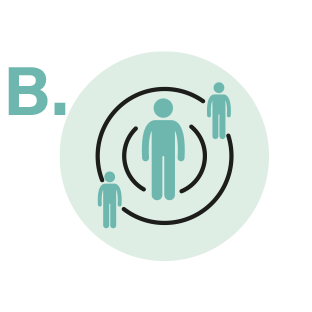
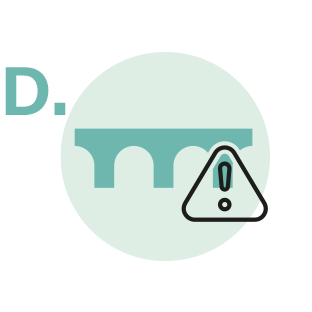
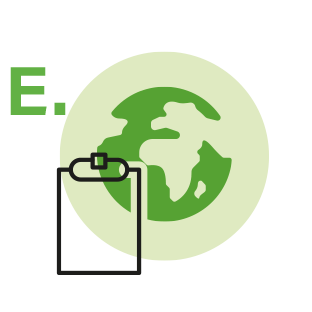


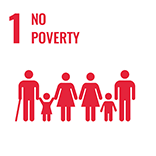

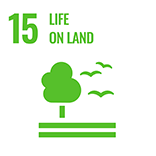

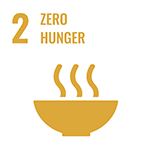
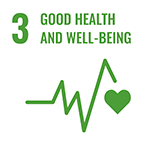

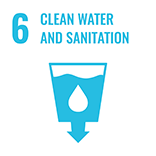

Comments
There is no content